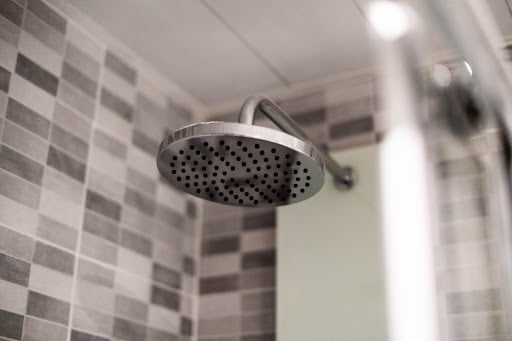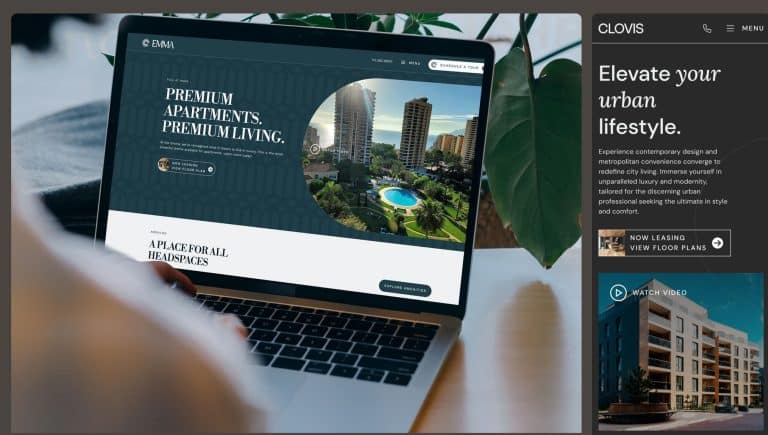RUBS Utility Billing: When and How to Use It [+ Pros and Cons]
RUBS Utility Billing: When and How to Use It [+ Pros and Cons] - You’ll need a solid understanding of RUBS, when you should use it, and how to launch this system on your property.

Dividing utility costs among units in multi-unit properties isn’t always cut and dry.
Sure, you could divvy up the bill and ask each unit to pitch in the same amount. But this seldom works because someone always ends up paying more than their fair share.
A ratio utility billing system — or RUBS — is a fair, cost-effective way to bill residents for their part of the total utilities.
Using RUBS for billing can help you recover utility expenses in a way that keeps your tenants satisfied.
But first, you’ll need a solid understanding of what RUBS is, when you should use it, and how to launch this system on your property.
So let’s break it all down for you.
What Is RUBS?
RUBS stands for Ratio Utility Billing System.
It’s a way to split the cost of utilities such as water, sewage (wastewater), gas, and electricity in multifamily properties. Many consider it fairer than splitting costs evenly among units that may not use an equal amount of each utility.
With RUBS, you’d split the bill based on specific criteria instead of the exact usage per unit.
How RUBS Works
The RUBS formula takes different factors into account.
Most often, RUBS utility billing divides the bill using the number of occupants in each unit, the square footage of each unit, or a combination of the two.
You can also include other X-factors to create an even more precise formula. That includes the number of bathrooms, bedrooms, and amenities, such as washing machines per unit.
In the end, it leaves you with a percentage or ratio of the bill each tenant must pay.
RUBS considers so many things and doesn’t assume everyone uses the same amount of utilities. That’s why many landlords consider it a fair method for dividing utility costs between residents in properties where submetering isn’t supported.
RUBS vs. Submetering
RUBS and submetering are effective ways to split utility bills, but they have fundamental differences.
Submetering is the better option most of the time because it’s more exact.
Submetering equips each unit with its own small meter down the line from the master meter to determine the exact usage of each utility.
Tenants will then receive a bill for the precise part of the utility bill they’re responsible for based on their meter reading.
RUBS is like submetering but without the need to install any equipment. Instead, a formula replaces the meters to determine a fair amount to bill each resident to cover the utilities.
When to Use RUBS

You may be wondering why someone would use a ratio utility billing system if submetering is a more exact way to split the bill.
But there are times when RUBS is better for a property or even the only way to charge residents fairly.
Not every property — especially those built a long time ago — is set up for submetering. And sometimes, the cost of installing submeters isn’t in the cards for a property owner right off the bat.
These are the most common reasons someone may choose RUBS over submetering for their property:
Submetering Isn’t Physically an Option
Older properties don’t always have a set-up compatible with meters for every unit. For example, each unit could share a single water line, or individual utility lines could be impossible to isolate.
In this case, you can’t install submeters even if you want to, which leaves RUBS as the best option.
You Need Something Fast
Installing submeters is a lengthy process, and sometimes you don’t have the time to wait on them. Meanwhile, the RUBS transition can begin as soon as a formula is in place.
It’s important to note that you must notify residents that you’re using RUBS on the property. Also, if this is a new change, everyone has to agree to the billing system before you can make the transition.
RUBS makes a great quick fix while you’re waiting for submetering or as a fast, permanent option for a property.
You Can’t Invest a Lot of Money
Submetering costs quite a bit upfront to install. Submeters can run you between $200 and $400 per meter plus labor costs to install the equipment.
If you don’t have that kind of money to put down right away, RUBS is a cost-effective way to bill residents in the meantime.
Hiring a utility billing company to keep track of your ratio utility billing system will cost you a fee, but it’s not one big chunk of money all at once.
Schedule a LeaseLeads demo today to match tenants to the perfect unit in your complex!
How to Use RUBS for Your Property

Using a ratio utility billing system is quick and easy. The most time-consuming part is creating a formula that factors what percentage each unit will be paying off each bill.
Property managers can do this using a spreadsheet to calculate bills. Or by employing a utility billing company that will create and manage the formula for you.
There are a few other things to consider before you can get RUBS up and running for your property, such as:
- Who is going to run it
- How to calculate it
- Ensuring everyone is on board with it
It’s often left in the hands of a third party that specializes in utility billing services. But that doesn’t mean you can’t do it all yourself if you’re comfortable crunching the numbers.
Hire a Utility Billing Company
Property owners and property managers don’t have the time to calculate utility bills every month for each resident. They have too many daily responsibilities that keep them busy without another task added to their plate.
That’s where a utility billing company comes in.
A good utility billing company will take care of everything for you, like:
- Generating the best RUBS formula for your property
- Figuring out what each resident owes each month
- Billing residents on your behalf
- Collecting all the payments
- Reimbursing you for the master bill from the utility company
The downsides to using a utility billing company include paying a fee for their service and the risk of delayed reimbursement.
Implement RUBS Yourself
It’s also possible to kickstart a ratio utility billing system on your own if you have the time.
But you’ll need a good understanding of creating a RUBS billing spreadsheet or how to use billing software to divide the bill.
Follow these steps to implement RUBS for your multifamily property:
- Perform a property analysis to determine the needs and goals of your RUBS program.
- Send notices to residents that inform them that you’ll be using a ratio utility billing system. Explain the program, when it’ll begin, and keep communication open if they have any questions.
- Add information for your building, units, and residents to your spreadsheet or billing software. Double-check that everything is accurate and up to date.
- Analyze master utility bills to determine how much each unit will pay using your formula.
- Create and send utility bill invoices to individual residents each month for their percentage of the master bill.
- Collect payments to pay utility bills in full or as a reimbursement for already paid utility bills.
Of course, the biggest downside of taking care of the billing on your own is human error. There’s always the chance your formula could go wrong, or your calculations might be off, in which case you would be on the hook for any missing money.
But if you’re confident in your allocation abilities, there’s no reason you can’t give it a try.
How to Create a RUBS Formula
Putting together a RUBS allocation formula that’s fair to everyone can take a lot of time and fine-tuning.
It’s not as simple as dividing the bill evenly among individual units depending on how many people live in each one.
For example, if one of your units has only one person living there and the next one is home to a family of three, you can’t triple the family’s water bill. That assumes their water usage is three times as much as the other unit, which likely isn’t the case.
Different utility billing companies use different methods for dividing bills, one of which may be helpful to you in creating your own formula.
These ratio utility billing calculations typically base formulas on occupancy and square footage. So each extra person or amount of space adds a little more to that unit’s ratio, creating a formula that’s as accurate as possible to actual usage.
Every formula accounts for common area utility usage, usually amounting to 10% of each bill the property owner must pay.
You can also add other factors to the formula to tweak it even more. That includes amenities, bedrooms, the number of water fixtures, and bathrooms.
Read Renting to College Students: The Complete Guide [2022] to learn how the pros keep off-campus units occupied year-round
Pros and Cons of Using RUBS

As with all things in life, using a ratio utility billing system in any property has pros and cons. Deciding if it’s right for you comes down to your billing options.
Before you start using a RUBS billing system, these are the things you should keep in mind:
Pros
We’ll start with the best parts of RUBS and why you should consider it as a legitimate utility billing option if you’re short on time and money.
Fast Implementation
RUBS can begin within a week and sometimes even within a day if push comes to shove. There’s no hardware to wait on or install, only a formula to create.
You can also get started using RUBS with little or no cost upfront.
Fair Division
RUBS is a much fairer way to break up utility bills than dividing the cost equally among all units that may not be using the same amount of utilities.
The factors that make up the formula help give everyone a fair percentage of the bill that everyone can agree on.
Utility Conservation
Residents receive bills for their percentage of utility usage.
This fact alone allows residents to become more aware of how much water and electricity they use. When they become aware, they also make an effort to use less.
Under the RUBS billing method, utility consumption can decrease from 5% to 40%.
Increased NOI
Property owners see their Net Operating Income increase now that they’re not responsible for utility costs. They also avoid the cost of installing submeters.
RUBS can also lead to residents reporting needed fixes to prevent overcharging.
All of this raises property value and works wonders for cash flow and operating expenses.
Cons
Now, we have to talk about the parts of RUBS that aren’t as appealing.
It’s important to consider whether these things are deal-breakers before taking any steps to implement RUBS in any property.
Less Accurate
Because it doesn’t record exact usage, RUBS isn’t a 100% accurate division of utility bills. Instead, it’s based purely on a formula that most people consider fair.
Yet, there’s always the possibility of disputes over billing if someone isn’t happy with their bill.
Lack of Data
A lack of submeter data can make it hard to find exact areas where mechanical fixes are necessary.
So if residents don’t report something wrong (like a broken pipe), you may be paying more in utilities without even knowing there’s a leak somewhere.
Local Restrictions
Even though it’s a great way to bill multifamily properties, RUBS isn’t allowed everywhere. Thus, it’s essential to keep track of regulations in your area to make sure RUBS is legal for you to implement and continue using for your property.
See Also: How to Write a Letter to Tenants Regarding Cleanliness
In Conclusion
Utility billing in a multifamily property doesn’t have to be a headache for property management companies.
Once you implement RUBS, it simplifies the billing process and keeps everyone happy about how much they’re paying for utilities.
Not to mention the money it saves and utilities it conserves in the process.
Learn how LeaseLeads can keep your vacancies down and digitize some of your most tedious leasing agent duties by scheduling a demo!






